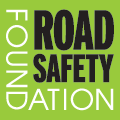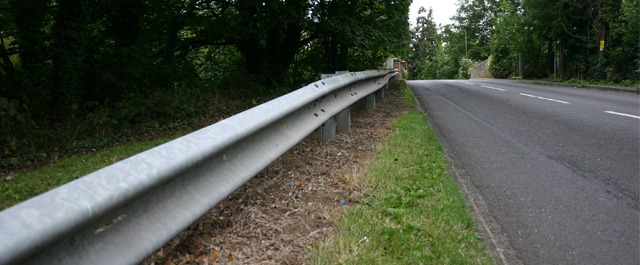SAVE MOST LIVES BY MAKING ROADS THEMSELVES SAFER
An urgent shift in road safety emphasis is needed to make the biggest cuts in the annual toll of 50,000 deaths on Europe’s roads, according to the European Road Assessment Programme (EuroRAP). Its pan European research shows that most people wrongly believe that investment in safer drivers (better driver behaviour) will save most lives over the next 10 years, compared to other road safety actions. An average of 60 per cent think that investment in safer drivers will yield the best results, compared to 27 per cent for safer roads and 13 per cent for safer cars. The results are released as the Austrian government, which holds the EU Presidency, launches a safer road infrastructure initiative today (24 January 2006).
While most crashes stem from driver error, Europe’s national safety strategies show that safer design and layout of the road itself would do most to reduce the rate of death and serious injury – especially in countries where messages about better driver behaviour and safer vehicles are generally understood and accepted. For example, in the Netherlands, safer roads initiatives are expected to save as many lives as those from ‘safer driver’ or ‘safer car’ initiatives combined. Some experts believe that safer roads could reduce deaths by up to 80 per cent in the coming decades.
EuroRAP Chairman, John Dawson says, “Although rankings vary across Europe and action on all fronts is essential, the value of making roads themselves safer is seriously underestimated. Unsurprisingly, people are most aware of their duty to be safer drivers. But the results reveal that specific campaigns by the Swedish and Dutch governments have led to the most accurate public understanding of road safety priorities. In France and Britain, the public has generally accepted the strong messages about driver responsibility, reinforced by tough enforcement. But this can take the pressure off finance ministries and road agencies to produce big reductions in road deaths with safer roads initiatives”.
In Sweden and the Netherlands, which have Europe’s best road safety record, the public rates investment in safer roads the highest. But the British, whose safety record is also good, rank safer roads a lower priority. Of all the countries surveyed, the French give safer roads the lowest rating, and the Swedes’ give the lowest rating to investment in safer cars.
In Germany investment in safer drivers gets the lowest ranking of all countries and that for safer cars gets the highest. Germans also rank the importance of safer roads above the European average.
In Spain, which has a poor road safety record, the public ranks safer roads highly – behind only Sweden and the Netherlands. Spain’s strong annual EuroRAP report, which pinpoints high-risk roads, has commanded widespread public attention for the last four years.
In Ireland, investment in safer roads receives a low priority – although Ireland has one of the most advanced programmes for improving roads in Europe. Of all countries, Ireland gives safer cars the fewest votes for delivering casualty reduction and its ranking of investment in safer drivers is the highest in Europe.
In Belgium, the ranking of investment in safer roads is close to the European average but that for improved driver behaviour scores higher than most and, for safer cars, less than most.
In Austria, investment in safer cars is ranked high and that for safer roads low.
“When it comes to improved driver behaviour, ‘big wins’, such as changing attitudes to drink-driving, seatbelt wearing and speeding have saved thousands of lives. Safer roads initiatives will provide the next ‘big win’ for road safety.
“First, we need public understanding of the need for action, then political will to act and, finally, investment to maximise the known safety benefits. That is why 18 European countries (Notes to editors 5) are supporting EuroRAP’s 2006 campaign, Safer Roads Save Lives, to get the ball rolling.
“Some road engineers, like some vehicle engineers before the European New Car Assessment Programme (EuroNCAP) hit its stride, are not getting enough support to apply what they know from research should be done. Crashes and their severity can be cut drastically by applying known road engineering measures at relatively little cost. And we need them on a grand scale where their benefits multiply – a ‘big fix’ to make our roads safe. This ‘mass action’ approach would initially aim to fix the safety performance of high-risk, single carriageway roads on which large numbers are dying,” says Dawson.
Notes to Editors

| UK | Ireland | France | Holland | Belgium | Sweden | Spain | Austria | Germany | |
| Safer Drivers | 3 | 1 | 2 | 8 | 5 | 6 | 7 | 4 | 9 |
| Safer Roads | 6= | 6= | 9 | 1= | 5 | 1= | 3 | 6= | 4 |
| Safer Cars | 3 | 8= | 6= | 4= | 6= | 8= | 4= | 2 | 1 |
- High Level Expert Meeting on “INFRASTRUCTURE SAFETY” Vienna, Hofburg (Redoutensale) 24-25 January 2006
- Comparison (pie charts) of projected life-saving achievements in Sweden, UK and the Netherlands – Page 7, From Arctic to Mediterranean – First Pan European Progress Report
- Derived from Koornstra et al. (2002). SUNflower: A comparative study of the development of road safety in Sweden, the United Kingdom and the Netherlands. SWOV Institute for Road Safety Research, Leidschendam, Netherlands. Table 8.9, page 115.
- The 18 countries participating in the Safer roads save lives campaign are: Austria, Belgium, Croatia, Czech Republic, Finland, France, Germany, Great Britain, Iceland, Ireland, Italy, Netherlands, Norway, Slovakia, Slovenia, Spain, Sweden, and Switzerland. See From Arctic to Mediterranean – First Pan-European Progress Report

